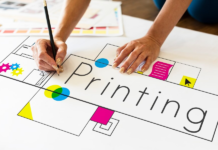In the world of material transportation, cable conveyors have become a popular choice due to their efficiency, versatility, and enclosed design. Keeping these conveyors clean and sanitized is essential, especially in industries where hygiene is paramount, such as food processing or pharmaceuticals. Explore the differences between cleaning and sanitizing cable conveyors, and why both are essential to maintain optimal functionality and compliance with hygiene standards.
Cleaning Cable Conveyors: Removing the Visible
Cleaning cable conveyors is the initial step in hygiene management, impacting performance, functionality, and safety. Regular cleaning prevents build-up that can slow down the conveyor and extends its lifespan by preventing corrosion and wear. By reducing the risk of contamination, especially in sensitive industries like food and pharmaceuticals, regular cleaning ensures safety.
What Does Cleaning Involve?
The cleaning process requires a pre-cleaning inspection to assess the conveyor’s specific needs. Selecting the right tools, such as brushes, water jets, or compressed air, and the appropriate detergents based on the transported material, are vital steps. Establishing a regular maintenance schedule ensures consistent performance over time.
- Physical Removal: Using brushes, water, or compressed air to remove visible dirt and debris,
- Use of Detergents: Applying cleaning agents to break down grease or sticky substances,
- Rinsing: Washing off the detergents and dislodged dirt to leave a clean surface,
- Inspection: Checking to ensure that all visible contaminants have been removed.
Cleaning prepares the conveyor for the sanitizing process and ensures that the materials being transported are not contaminated by any leftover residues. It’s vital for the smooth running and longevity of the conveyor system.
Sanitizing Cable Conveyors: Going a Step Further
Sanitizing is more than surface cleaning. It’s about eliminating invisible threats like bacteria and viruses that pose serious health risks. Compliance with regulations, consumer safety, and brand reputation are critical drivers for regular sanitizing.
What Does Sanitizing Involve?
The sanitizing process includes identifying potential microbial risks, choosing the right sanitizers (either chemical or heat-based), regular monitoring and verification to ensure effectiveness, and training staff in proper sanitizing procedures
- Use of Sanitizers: Applying chemical sanitizers designed to kill bacteria, viruses, and other microorganisms,
- Heat Sanitization: Utilizing high-temperature steam or hot water as a means to sanitize the surfaces,
- Contact Time: Allowing the sanitizer to remain on the surface for a specific time to ensure effectiveness,
- Rinsing (if necessary): Washing off the sanitizing agents if they are not labeled as “no-rinse.”
Sanitizing not only protects the product from potential contamination but also safeguards the health of the workers and end consumers.
Cleaning vs. Sanitizing: Understanding the Differences
Cleaning focuses on the removal of visible dirt and debris to maintain performance and appearance through physical effort, water, and detergents. In contrast, sanitizing targets the elimination of microorganisms to ensure safety and compliance with regulations. This is achieved through chemical agents, heat, and controlled processes.
In summary, cleaning:
- Removes visible dirt and debris.
- Utilizes physical effort, water, detergents.
- Prepares the surface for sanitization.
And sanitizing:
- Targets invisible microorganisms.
- Requires specific chemical agents or heat.
- Ensures compliance with hygiene standards.
Industry-Specific Requirements: Tailoring the Approach
Different industries have unique needs and regulations. In the food industry, daily cleaning and sanitizing are essential to prevent foodborne illnesses. The pharmaceutical industry requires precision cleaning and sanitizing to avoid cross-contamination.
Manufacturing typically involves regular cleaning with occasional sanitizing depending on the materials, while the chemical industry must adhere to specific protocols for handling potentially hazardous substances.
Technology and Innovation in Cleaning and Sanitizing
Modern cable conveyors offer advanced features that facilitate cleaning and sanitizing. Automated cleaning systems with pre-programmed cycles, eco-friendly solutions utilizing sustainable agents, and customizable options adapting to industry-specific needs and regulations are all part of today’s conveyor landscape.
Partner with Expertise for Optimal Hygiene
Maintaining the hygiene of cable conveyors through proper cleaning and sanitizing is not just a task but a commitment to quality and safety. Understanding the difference between these two processes and applying them appropriately can significantly impact the efficiency, lifespan, and compliance of your conveyor system.
If you’re looking for a conveyor system designed with hygiene in mind or need guidance on cleaning and sanitizing practices, Cablevey Conveyors is here to help. Their expertise in cable conveyors, combined with a focus on hygiene, makes them a reliable partner in your journey towards operational excellence. Reach out to Cablevey Conveyors today, and explore their tailored solutions to fit your industry’s specific needs.


























